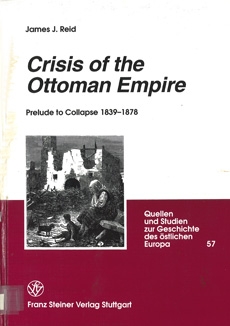
Crisis of the Ottoman Empire
James J. Reid
Franz Steiner Verlag
Comparative investigation of 19th-century wars, combined with a knowledge of Ottoman, Balkan, and Middle Eastern historical developments can afford some understanding of the wars that transpired in the Ottoman Empire from 1853 to 1878. Certain fields lend themselves to comparative study, and one such field is military history. Generals and military establishments have dwelt in a constant need to learn about the progress of other armies, especially their enemies. When an army has failed to keep abreast of developments, the results are not only obvious, but devastating for the laggard. In the 19th century, the Ottoman army had begun to make efforts at change, but ambitions exceeded results. Change occurred, but not the sort that the reformers had planned. Most Ottomanists and Turcologists seek to portray “reform” as a unilateral proposition undertaken by the Ottoman elite with a definable purpose, and a sense of discipline. Even if the reformers failed, their vision for the future prevailed in new emanations during future reform efforts. Comparative studies enable a more realistic picture to emerge.
Comparative investigation has particular benefits for the Ottoman army in the 19th century in that British, Hungarian, Polish, French, German, Austrian, and even Austrian Croatian officers held rank in the Ottoman |